
Archetype of the Yorkshire Dales
What do England's most notorious monarch, a famous fictional vet and a cheese-loving inventor made out of clay all have in common? Answer: members of this unusual troupe have all left their mark on a picturesque valley in North Yorkshire. Through the intervention of Richard III, James Herriot and Wallace (and a few more besides), Wensleydale has become the paragon of the Yorkshire Dales.
[caption id="WondrousWensleydale_img2" align="aligncenter" width="554"]
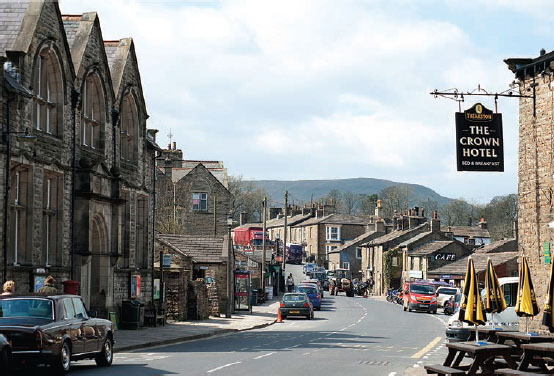
M. RALLEN
The best place to begin our exploration is in Hawes, a small town with a population of 1,000 or so souls who live at the upper end of the Wensleydale valley. Here you’ll find a pretty marketplace surrounded by good pubs with decent beer, but don’t disappear into the snug for a pint just yet, because Hawes' biggest selling point is all around you. Just look up. Circling the town are Dodd Fell, Snays Fell, Stags Fell and Widdale Fell—high moorland that all provide spectacular views. It's a hiker's paradise, with plenty of routes heading up, down and across the fells and valley.
To find out a little more about the creation of this stunning landscape, check out the National Park Centre and Dales Countryside Museum, both of which are situated in the old, disused Hawes railway station. The story of Wensleydale begins a long time before steam locomotives, though; it was water that first powered this valley. Retreating glaciers exposed carboniferous limestone to the elements and meltwater found the path of least resistance, creating streams and rivers that ground the soft limestone away, forming a series of valleys—or, as they are known in this part of the world, the dales.
Indeed, Wensleydale shouldn’t really be known by that name at all. All the other valleys of the Yorkshire Dales are named after the river that runs through them. Malhamdale, Wharfedale and Swaledale are among the best known and, if the same pattern is followed, we should know Wensleydale as Uredale or, in old-speak, Yoredale. Yet if the River Ure has missed out on its moment of fame, at least it is recognized in the naming of the geological phase upon which Wensleydale and a few of the other dales sit. The Yoredale Series differs from other areas because the limestone beds are segmented by harder sections of sand-stone, gritstone and shale. These rocks protrude from the valley sides, creating magnificent natural waterfalls.
[caption id="" align="aligncenter" width="807"]
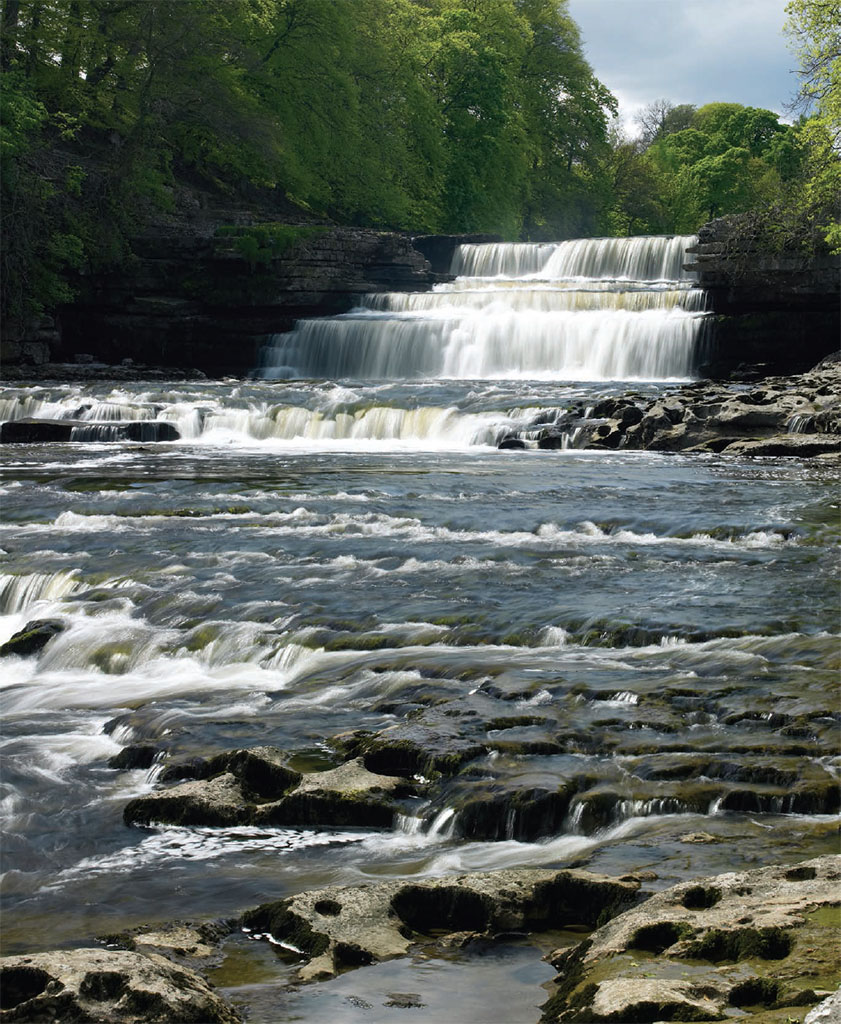
With a single drop of 30 meters, Hardraw Force—just a mile and a half from Hawes on the Pennine Way walking trail—is England's highest above-ground waterfall. It's around half the drop of Niagara and the flow of water is puny by comparison, but Hardraw is pretty rather than powerful. Part of its quirky charm is that the falls can be found within the grounds of the Green Dragon Inn, a wonderful pub featuring open fires, beamed ceilings and stone walls. The bedrooms here are a perfect base to explore the top end of Wensleydale, and reasonably priced too. Indeed, the whole joint is on the market—if you have a spare £1 million, you could call it home forever!
In one memorable scene that set female hearts fluttering, Kevin Costner famously bared his backside at Hardraw Force in Robin Hood: Prince of Thieves; a little further down the valley, a second waterfall features in the same movie. As opposed to Hardraw's single tall drop, Aysgarth Falls is a series of three smaller waterfalls along the river, and it was here that Robin Hood first meets and fights Little John in the Hollywood blockbuster. The gentle flow of Aysgarth rivals Hardraw Force's height in the picturesque stakes and has proven inspiration for John Ruskin, J.M.W. Turner and William Wordsworth. Aysgarth Falls also marks the point where the deep valley of Upper Wensleydale transforms into the slightly flatter, rolling land of Lower Wensleydale.
The first settlers of this valley were less entranced by its natural beauty than they were of its ability to produce food. Lower Wensleydale's grassland meadows were well supplied with water, making it a good place for planting. The rugged uplands of Upper Wensleydale in the west may not have been suitable for tending crops, but it was perfect for grazing sheep. These facts did not go unnoticed by the Cistercian monks of Jervaulx Abbey on the eastern edge of Wensleydale, and the holy order soon amassed lands in the valley and put them to productive and profitable use. At its height, the Cistercian monastery owned half of Wens-leydale and became so wealthy that the abbey complex grew ever more spectacular,ss until the Cistercians' untimely fall at the hands of Henry VIII. Now privately owned, but open to the public, Jervaulx is well worth a visit; drop some coins in the honesty box and take in the atmospheric and evocative ruins.
[caption id="WondrousWensleydale_img5" align="alignright" width="354"]

DANA HUNTLEY
The Jervaulx monks did more than just pray and rake in the cash. They were also known for being adept at the breeding of horses and making cheese; both traditions are carried on in the local area to this day. The horse breeding occurs at Middleham, where 15 racehorse trainers look after 500 charges, exercising them on nearby High Moor to build up speed and stamina. Yet although the equine industry is Middleham's biggest employer, this pretty market town is known less for its horses and more for the most famous resident of its castle. First constructed in the 12th century, Middleham Castle was the childhood home of the Duke of Gloucester, the future Richard III, who was brought up under the care of the Earl of Warwick. Richard then made the castle his own home when Warwick the Kingmaker met a violent end after double-crossing the Yorkist cause.
For 14 years, Middleham and its surroundings were the young Duke's powerbase, helping him accumulate money and the strength that goes with it, eventually leading to the English throne. Had history taken another course with King Richard seeing off Henry Tudor's challenge at Bosworth, Middleham might now be as well known as Windsor, Balmoral and Sandringham. Instead, Richard ended his days under a Leicester car park and his favorite castle was consigned to relative obscurity, preserving the rural charm of the dale in which it sits. Yet Middle ham is still worth a visit. The castle is compact and, although in ruins, most of the walls are intact. Aside from the gloriously gory history of Warwick the Kingmaker and England's infamous monarch, the viewing platform provides spectacular views west, back into Wensleydale.
[caption id="WondrousWensleydale_img6" align="aligncenter" width="717"]

DANA HUNTLEY
[caption id="WondrousWensleydale_img7" align="aligncenter" width="611"]
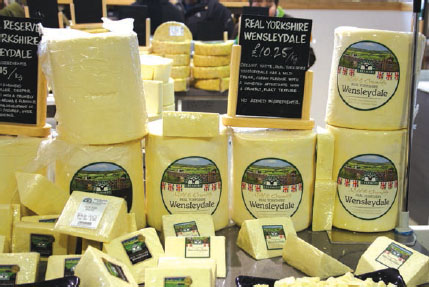
DANA HUNTLEY
And that is where we must return, for the other traditional craft that the monks of Jervaulx were known for—cheese making—still goes on at the other end of the valley, back where we began, in Hawes. As we retrace our steps alongside the River Ure, be sure to pause at Askrigg. Think it looks familiar? That's probably because you in a recognize it from All Creatures Great and small, the television series following the life of rural vet James Herriot and based on the reallife experiences of author Alf Wight. It was a staple on our screens throughout the ‘80s, and such is the slow pace of change in this part of the world that the locations used are barely any different. Askrigg doubled up as Herriot's Darrowby, with many a scene set in its streets, while his veterinary surgery at Skeldale House is now a boutique bed and breakfast. You’ll find other Herriot locations dotted around Wensleydale, including Redmire, Leyburn and Wensley—the village from which the dale takes its name. All have small, quaint streets containing pretty gritstone cottages; all are well worth perambulating with camera in hand. Fantastic photo opportunities abound. But what of the cheese? Wensleydale Creamery was built in Hawes in 1897, producing a distinctive crumbly, moist cheese using a recipe originally garnered from the Jervaulx monks and handed down the generations by local farmers' wives. The creamery nearly closed at the start of the 1990s, until Aardman Animations revealed in A Close Shave that Wensleydale is the favorite cheese of their clay-animated hero Wallace, a good natured, eccentric, cheese-loving inventor. Helped by the publicity of being featured in an Oscar-winning short film, sales of Wensleydale cheese began to grow and the creamery is now a multi-million-pound business. Tour the cheese museum and watch an expert create a cheese from eight pints of milk in 40 minutes. Afterward is the perfect time to return to one of those pubs by the market square to sample a pint and a hunk of Wensleydale's most famous export. Most people eat the cheese as an accompaniment to fruitcake, although locals like it alongside their apple pie.
[caption id="" align="alignnone" width="1001"]

KEVIN EAVES
It's impossible to see all that the Yorkshire Dales has to offer in a couple of days, but Wensleydale is a perfect choice for anybody who wants a taste of the national park on a limited timescale. Whether you’re into high fells or waterfalls, crumbling cheese or crumbling castles, you’ll find plenty to do in the most famous of the Dales.
Wandering Wensleydale
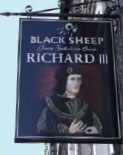
DANA HUNTLEY
[caption id="" align="aligncenter" width="506"]
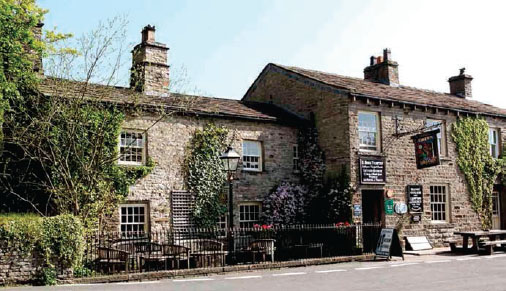
GREENDRAGONHARDRAW.COM
[caption id="" align="aligncenter" width="505"]
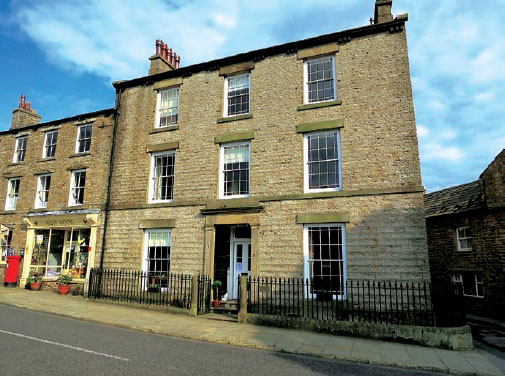
COUNTRESY SKELDALEHOUES.COM





Comments